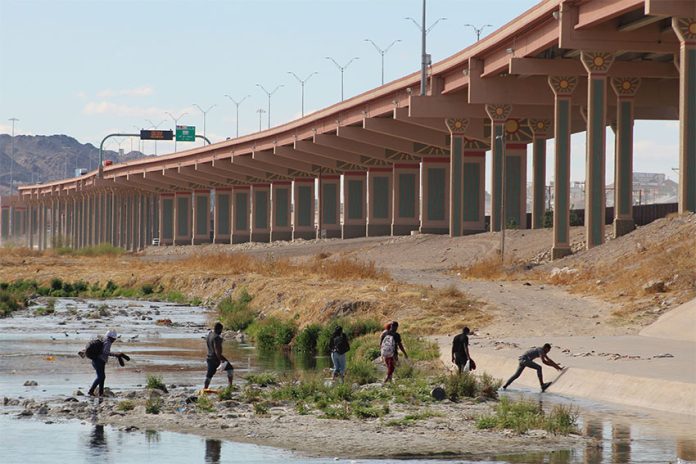The northern border cities of Ciudad Juárez and El Paso, Texas, saw one of the largest migrant crossings in their history on Sunday night, after a group of mostly Nicaraguan migrants, some fleeing extortion in Mexico, crossed the border en masse.
Around 1,000 people waded across the Rio Grande and turned themselves in to U.S. Border Patrol authorities to claim asylum in the U.S. Some had been held hostage for several days in the northern state of Durango, after buses transporting them from Mexico City handed them over to an organized crime group.
National Guard agents had rescued the group and bused them to Ciudad Juárez, under police escort for their safety. Migrant accounts and reports from the Mexican authorities describe multiple mass kidnappings in recent weeks, including the release of 253 people who were being held at a property in Ciudad Lerdo, Durango, on Dec. 5.
“I am afraid and sad. A cartel in Durango caught us and told us they would take us to immigration [authorities]. We were kidnapped, they were armed people. It was like that for five days until the National Guard helped us,” one of the migrants, Oscar Sánchez, told the news agency EFE at a migrant center in Ciudad Juárez.
Later that evening, the group joined with other migrants to flee into El Paso, further straining facilities in a town that has already seen around 53,000 arrivals during October — the most recent month on record — and as many as 2,000 arrivals per day over last weekend. Those who cannot be expelled are usually apprehended then released on short-term parole. Many have resorted to sleeping on the streets in near-freezing temperatures.
“The numbers are like nothing I’ve seen for the last 25 years,” Blake Barrow, director of the Rescue Mission of El Paso, told The New York Times. “The whole dynamic has changed with the large numbers of people from countries like Nicaragua. … The situation is overwhelming us.”
U.S. border towns have seen a surge of migrants fleeing Nicaragua’s humanitarian crisis in recent months. Because of strained diplomatic relations between the U.S. and Nicaragua, they cannot be repatriated. And unlike Central Americans and — since October — Venezuelans, Mexico will not accept them if they are expelled from the U.S.
U.S. border authorities are braced for the crisis to escalate from Dec. 21, when Title 42 — the pandemic-era legislation that allows the US to immediately expel migrants who will be accepted in Mexico, without recourse to legal hearings — is set to expire. Thousands are currently camped in shelters along the border, waiting for their chance to claim asylum.
With reports from La Prensa Latina, Aristegui Noticias and The New York Times
